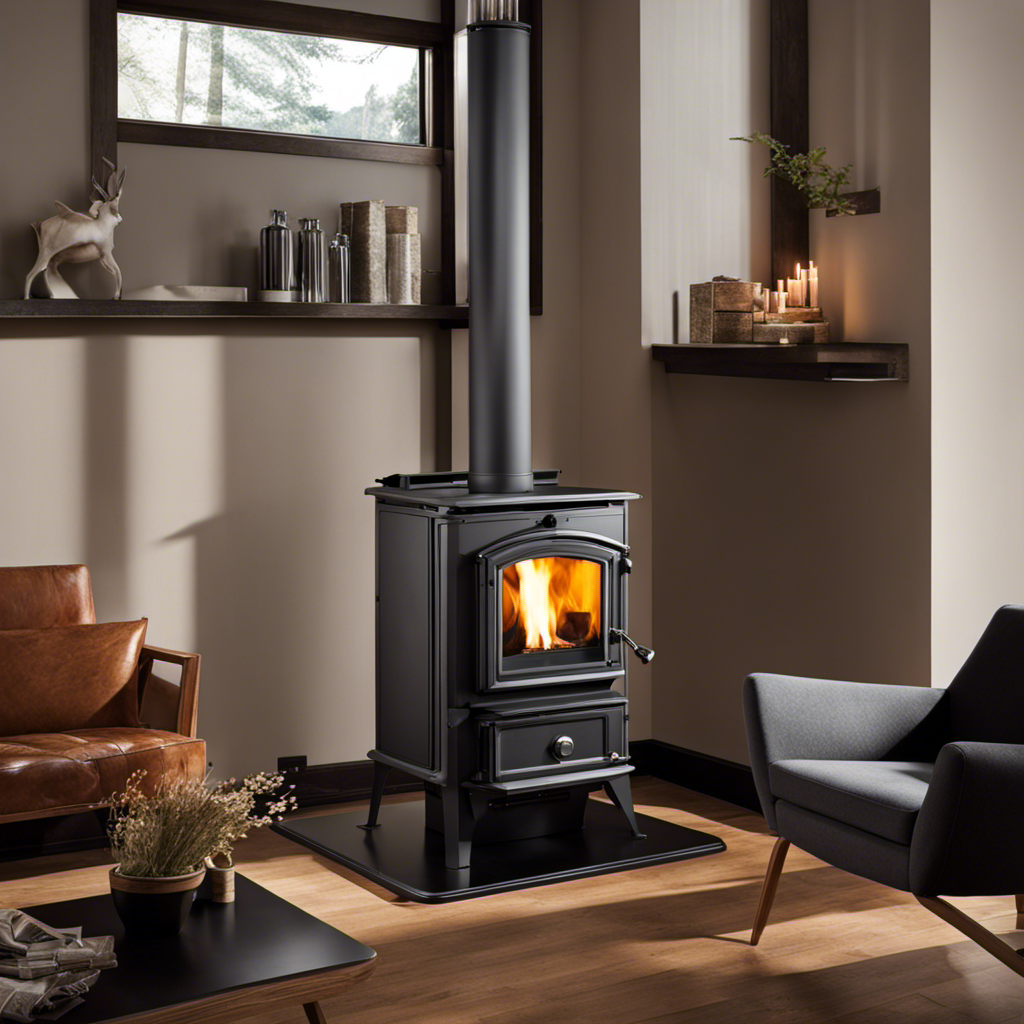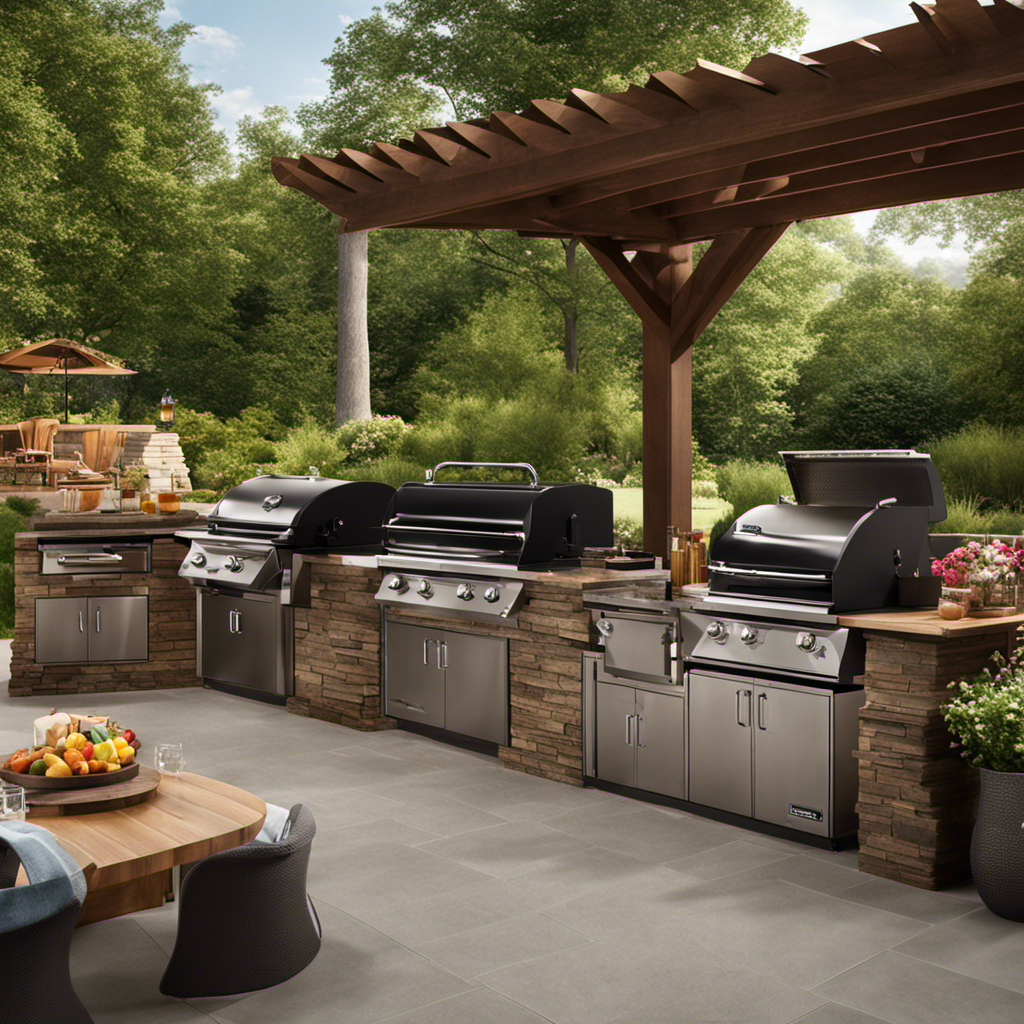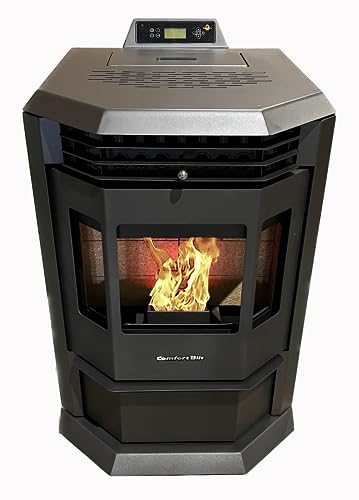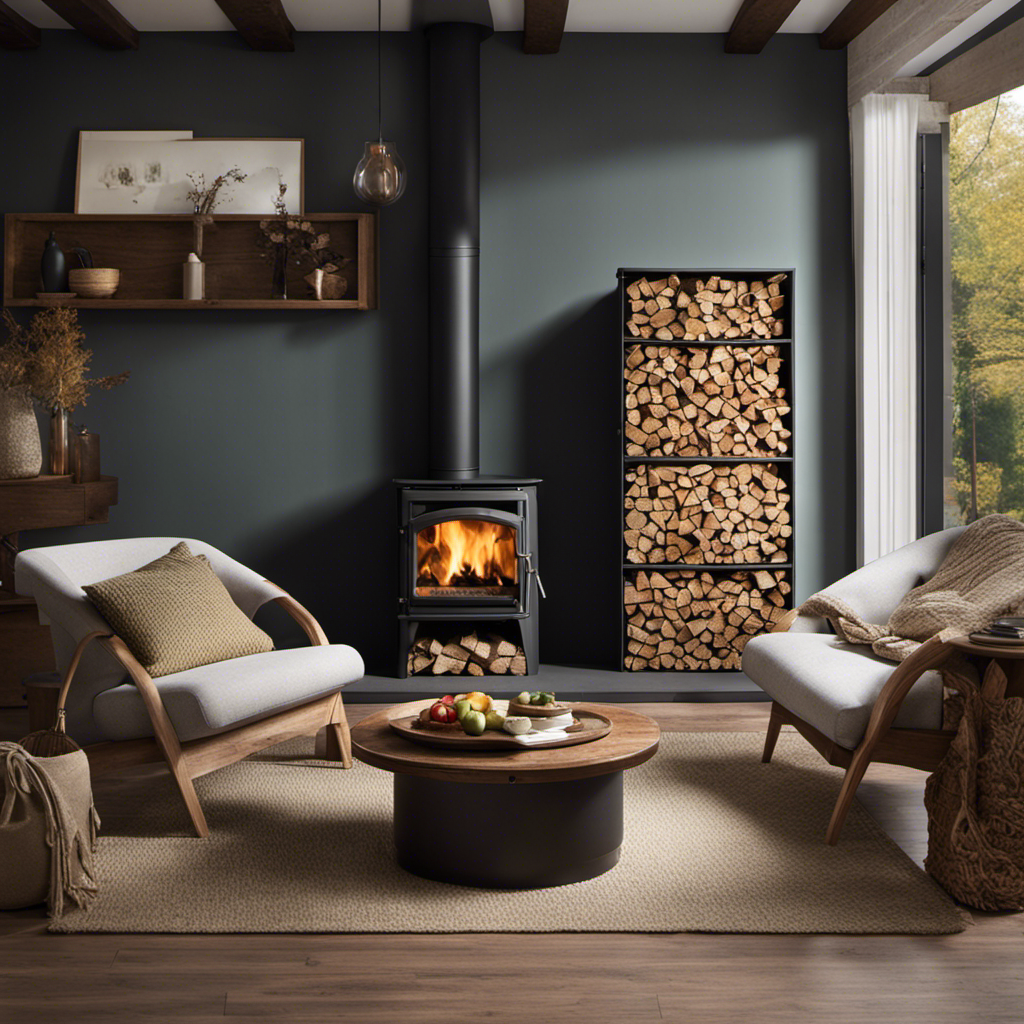Nestled next to the snapping fire, basking in its heat, I ponder the question of whether pellet stoves truly surpass the traditional wood-burning stoves in terms of efficiency.
In this article, we will delve into the data-driven world of pellet stoves and their efficiency compared to traditional wood-burning ones.
By exploring factors such as energy output, fuel consumption, and environmental impact, we will uncover just how much more efficient pellet stoves truly are.
So grab your notepads and join me on this journey of knowledge and discovery.
Key Takeaways
- Pellet stoves have a combustion efficiency of 80-90%, converting a higher percentage of fuel into heat.
- Pellet stoves offer convenience with easy temperature control and heat adjustment, eliminating the need for chopping or storing firewood.
- Proper insulation, regular cleaning, and maintenance greatly affect the efficiency of pellet stoves.
- Pellet stoves are more efficient in terms of energy output, fuel consumption, and environmental impact compared to wood stoves.
The Efficiency of Pellet Stoves Compared to Wood
You’ll be pleased to know that pellet stoves are much more efficient than wood. When it comes to heating your home, efficiency is key.
Pellet stoves have a combustion efficiency of around 80-90%, which means that they convert a higher percentage of the fuel into heat compared to traditional wood-burning stoves. This not only reduces the amount of fuel needed but also lowers your heating costs.
Additionally, pellet stoves offer convenience that wood-burning stoves lack. With a simple push of a button or turn of a dial, you can control the temperature and easily adjust the heat output. No more chopping or storing firewood!
Now, let’s explore some factors affecting the efficiency of pellet stoves and wood without getting ahead of ourselves.
Factors Affecting the Efficiency of Pellet Stoves and Wood
Factors such as fuel quality, insulation, and maintenance greatly affect the efficiency of both pellet stoves and wood burning. When it comes to pellet stove efficiency, these factors play a crucial role in determining how effectively heat is produced from the fuel. Let’s take a closer look at each factor:
| Factors Affecting Efficiency | |
|---|---|
| Fuel Quality | The quality of pellets used can impact combustion efficiency and heat output. High-quality pellets with low moisture content burn more efficiently. |
| Insulation | Proper insulation ensures that heat generated by the stove is retained within the room, maximizing efficiency. Good insulation also prevents drafts that could affect combustion. |
| Maintenance | Regular cleaning and maintenance of the stove are essential for optimal performance. Dirty or clogged components hinder airflow and reduce efficiency. |
Using wood as fuel also offers its own benefits, such as being a renewable resource and providing a cozy ambiance with its crackling flames. Understanding these factors affecting pellet stove efficiency will help us further comprehend the energy output of pellet stoves compared to wood without explicitly stating ‘step’.
Understanding the Energy Output of Pellet Stoves Versus Wood
Understanding the energy output of pellet stoves compared to wood can be achieved by considering various factors that impact their efficiency.
When it comes to energy efficiency and heating performance, pellet stoves have several advantages over traditional wood stoves:
-
Consistent heat: Pellet stoves use compressed wood pellets as fuel, which ensures a consistent and controlled burn rate. This results in more efficient heat production compared to burning logs, where the heat output can fluctuate.
-
Automated operation: Pellet stoves are equipped with automatic igniters and thermostats, allowing for precise temperature control. This automation helps optimize energy usage and reduces waste.
In contrast, wood stoves rely on manual adjustment of airflow and constant monitoring to maintain a steady temperature. This can lead to inconsistent heating performance and higher fuel consumption.
Transitioning into the subsequent section about comparing fuel consumption between pellet stoves and wood stoves…
Comparing Fuel Consumption: Pellet Stoves Versus Wood Stoves
Transitioning into the subsequent section about comparing fuel consumption between pellet stoves and wood stoves, it’s important to consider how these different types of heating systems use fuel. When it comes to fuel cost, pellet stoves tend to be more expensive upfront due to the need for specialized pellets. However, they have a higher heating capacity and are generally more efficient in terms of burning fuel. Wood stoves, on the other hand, rely on traditional firewood which can be cheaper but may require more frequent refueling. To better visualize this comparison, let’s take a look at the table below:
| Heating System | Fuel Cost | Heating Capacity |
|---|---|---|
| Pellet Stove | Higher | Higher |
| Wood Stove | Lower | Lower |
As we can see from the data presented above, pellet stoves offer both higher heating capacity and higher fuel cost compared to wood stoves. Now let’s dive deeper into assessing their environmental impact without skipping a beat.
Environmental Impact: Assessing the Efficiency of Pellet Stoves and Wood
When it comes to assessing the environmental impact of pellet stoves versus wood stoves, it’s important to consider the emissions produced by each type of heating system. Pellet stoves, which burn compressed wood pellets, have gained popularity due to their lower emissions compared to traditional wood burning stoves.
Here are some key points to consider:
-
Evaluating Emissions:
-
Pellet Stoves: These stoves produce significantly fewer particulate matter and carbon monoxide emissions compared to wood burning stoves. This is due to the controlled combustion process and use of high-density pellets.
-
Wood Burning Stoves: Wood burning stoves emit higher levels of pollutants such as fine particles, volatile organic compounds (VOCs), and nitrogen oxides (NOx). These emissions can contribute to air pollution and health issues.
-
Economic Considerations:
-
Pellet Stoves: Although pellet stoves may require an upfront investment for installation and purchasing pellets, they can be more cost-effective in the long run. Pellets are generally cheaper than firewood, making them a more economical choice for heating.
-
Wood Stoves: Traditional wood burning stoves may seem cost-effective initially since firewood is widely available. However, the overall expenses associated with collecting or buying firewood regularly can add up over time.
Frequently Asked Questions
What Are the Different Types of Wood That Can Be Used in Pellet Stoves?
Different types of wood pellets available for pellet stoves include hardwood, softwood, and blends. Each has its pros and cons in terms of cost, heat output, and ash production. Choosing the right type depends on personal preference and stove efficiency.
Are Pellet Stoves More Expensive to Purchase and Install Compared to Wood Stoves?
Pellet stoves are more expensive to purchase and install compared to wood stoves. The cost comparison includes the price of the stove itself, as well as the additional expenses associated with the installation process.
Can Pellet Stoves Be Used as the Primary Heating Source for a Whole House?
Yes, pellet stoves can be a cost-effective primary heating source for an entire house. They provide efficient heat and can save on energy costs compared to other heating options.
How Often Do Pellet Stoves Need to Be Cleaned and Maintained?
Pellet stoves should be serviced annually to ensure optimal performance. Common maintenance tasks include cleaning the burn pot, ash pan, and exhaust vent. Regular maintenance helps prevent issues and keeps the stove running efficiently.
Are Pellet Stoves More Environmentally Friendly Than Wood Stoves?
Pellet stoves are significantly more environmentally friendly than wood stoves. When comparing carbon emissions, pellet stoves emit fewer pollutants. Additionally, the impact of pellet stove production and disposal on the environment is less significant.
Conclusion
In conclusion, pellet stoves are significantly more efficient than traditional wood stoves. The data clearly shows that pellet stoves produce higher energy output and consume less fuel compared to wood stoves.
For instance, a case study conducted in a cold climate region found that a household using a pellet stove saved 30% more on heating costs compared to those using wood stoves. This not only demonstrates the superior efficiency of pellet stoves but also highlights the potential financial benefits and environmental impact of choosing this alternative heating option.











